CLICK TO SEE THE PHOTO MONTAGE VIDEO THEN SCROLL DOWN TO READ THE FEATURE BELOW!
Story by Toby Brooks
Photos by John Jackson
Gary Buckles didn’t set out to define or defy any trends in 1993 when he built his now-legendary 1971 Camaro pro streeter. He wasn’t aiming to be a legend of pro street and it was never his intention to achieve a near-cult following on the internet some 20 years later (heck, there really WASN’T much of an internet in 1993, anyhow).
What he DID intend to accomplish was build a silky-smooth, super-cool cruiser with excellent street manners and real-world drivability in a package so subtle and sleek that the average show-goer could spend hours staring without catching every trick and tweak.
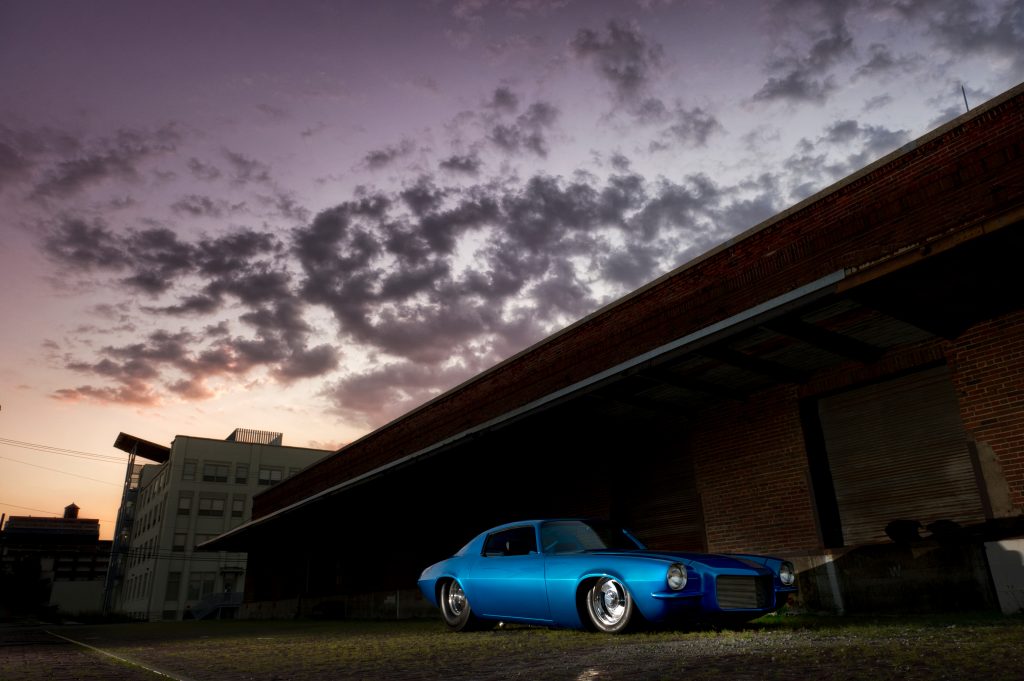
We’d say mission accomplished on all objectives, both intentional and otherwise.
The Dayton, Ohio resident and longtime Dayton/American Wheel sales and logistics guru first debuted the car in 1993 when he drove it to several shows, including the Street Machine Nationals in DuQuoin, Illinois. With no garish graphics, no loping and surging big block, and no blower-pierced hood, it was a stark contrast to the prevalent flavors of the day. However, to say the bad blue Bowtie has effectively stood the test of time is a gross understatement.
“When we started building the car, I really had no idea what people would think—let alone how it would still be so popular 20 years later,” Buckles said.
The car was featured prominently at the return of the Street Machine Nationals in DuQuoin in 2013, the first show back at the facility since 1998, where it drew drop-jawed looks all weekend even though it is essentially unchanged from the day Buckles debuted it some two decades prior. Save for several thousand miles, that is.
And who could blame him, really? Although Buckles contributed countless hours and creative input on the build, he credits Chris Tietges of Tietges Hot Rod Garage with much of the execution. Tietges first attacked the second gen’s suspension by installing a 2×4-inch backhalf with a handcrafted stainless four-link with custom anti-roll and panhard bars and a narrowed Ford 9-inch rear. The setup rides on American coilovers and Ford rear drum brakes.
Up front, the wickedly low stance might look cool at shows, but was impractical for the regular street duty Buckles had in mind. An adjustable suspension seemed the way to go. However, Bret Voelkel and Ride Tech had not yet revolutionized street machining with air bags way back in 1993. As a result, Tietges leaned on lowrider technology and installed a pair of six-inch hydraulic cylinders up front to get the job done. A 4-inch drop featuring a 2-inch shave to the crossmember and a pair of custom fabricated A-arms further accentuated the slam, while a pair of chromed Pete & Jake’s shocks helped smooth the ride. Factory GM discs were retained for stopping chores up front.
Rolling stock for the cool cruiser consists of massive 33×21.5-15-inch Mickey Thompson Sportsman rears mounted to 15×14 Boyd’s Deuce wheels and comparatively tiny P205/60R-15 BFGoodrich tires mounted to 15×6-inch Deuce billets up front.
The custom sheetmetal is a study in overwhelming subtlety. Tietges coaxed and massaged nearly every panel inside and out with deft precision and artisan craftsmanship. Whether it is the 3-inch stretched nose, custom billet grille, shaved marker lamps, shaved door handles, smoothed drip rails, or custom flush-mounted 1985 Corvette taillights, the styling touches are literally everywhere. Nearly 50 gallons of mile-deep PPG Deltron Bahama Blue was used to flawlessly cover the laser-straight panels. Okay, so maybe we exaggerated a bit.
Other ground-breaking features include the electric actuator powered front-tilt hood. The entire panel was smoothed and painted top and bottom before being fitted with a trick 4-link style dual axis hinge that allows it to tip up and out to display the warmed-over small block.
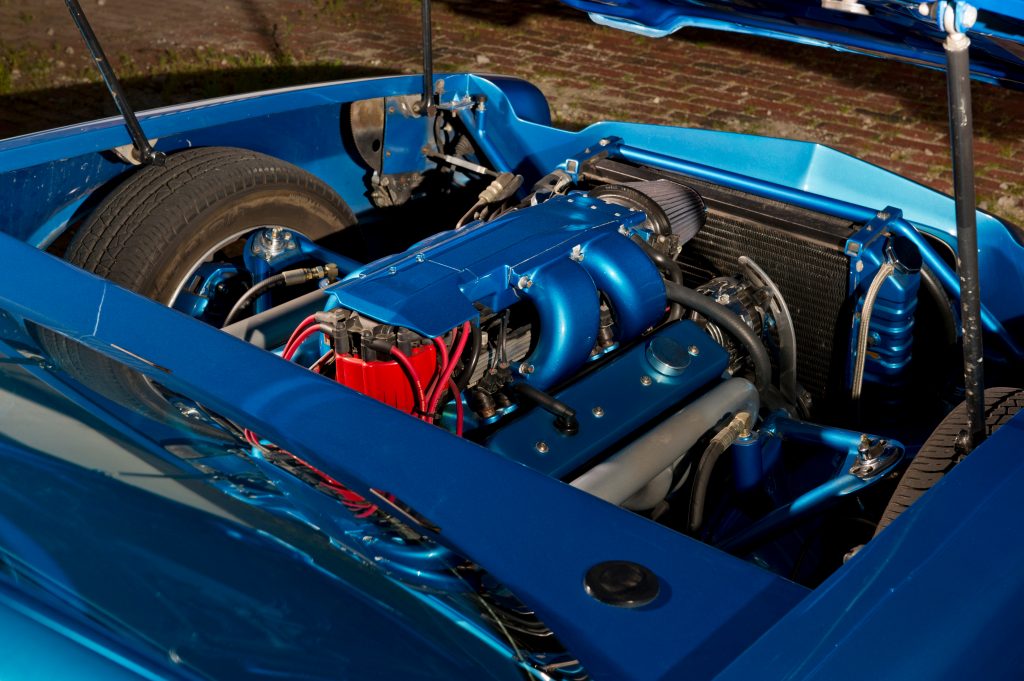 The engine and trans were pirated from an ’89 Corvette. The 350 features a smoothed and painted GM tuned port injection system with Summit SLP runners. The engine is stock but has been treated to masterful smoothing and detailing by Jack Dunlap. Most pieces have been treated to copious amounts of the aforementioned PPG hue, but a few strategically placed polished or chromed pieces add visual appeal. A stock 700-R4 provides steady performance and overdrive—particularly useful for Buckles’ long cruises to shows.
The engine and trans were pirated from an ’89 Corvette. The 350 features a smoothed and painted GM tuned port injection system with Summit SLP runners. The engine is stock but has been treated to masterful smoothing and detailing by Jack Dunlap. Most pieces have been treated to copious amounts of the aforementioned PPG hue, but a few strategically placed polished or chromed pieces add visual appeal. A stock 700-R4 provides steady performance and overdrive—particularly useful for Buckles’ long cruises to shows.
The custom-fabricated headers are unique and add to the smooth look under the hood. Jet-Hot coated tubular log-style manifolds were created from 2 ¼” tubing that feed into a pair of glasspack mufflers. The car quietly purrs at idle.
As cool as all those custom features might be, one look inside the car is all that it takes to see that this is no typical pro street Camaro. The entire interior has been welded, smoothed, and painted body color.
We really didn’t start off with the plan to paint the whole interior,” Buckles recalled. “(But) when Chris started doing all the sheetmetal work, it was all so perfect that it seemed like a shame to cover it up,” he said. Soon, mention of leaving it exposed and painting it body color turned serious. The rest, as they say, is history.
The only fabric or stitching of any kind anywhere inside can be found neatly hugging the Flofit bucket seats or wrapping the Boyd’s Gullwing steering wheel. Everything else—and we mean EVERYTHING else—is smoothed and painted. The dash, door panels, floorboards, and even the headliner have all been treated to the custom touch.
A dash full of Dakota Digital gauges in a trick billet bezel monitor operating conditions while a Vintage air AC system keeps occupants cool. An Alpine audio system has been stealthily hidden in and under the dash, as has the custom shift lever. A scant few pieces of billet street rod componentry like pedals, interior door handles, and custom window cranks provide contrast against the rich sea of PPG blue.
 The lone graphic on the car, a Bob Maynard-applied Craftsman 9/16 wrench, is a cool touch applied to the slicked and smoothed 3 ½-inch channeled floorpan. A pro street legend himself, Maynard says out of all the graphics he has done in his career, he probably still gets comments and compliments about the unique tool he airbrushed on Buckles’ car way back in the day.
The lone graphic on the car, a Bob Maynard-applied Craftsman 9/16 wrench, is a cool touch applied to the slicked and smoothed 3 ½-inch channeled floorpan. A pro street legend himself, Maynard says out of all the graphics he has done in his career, he probably still gets comments and compliments about the unique tool he airbrushed on Buckles’ car way back in the day.
With killer cool looks and a real-world drivability, Buckles’ Camaro was and is a breathtaking example of everything pro street was, is, and still can be. Coupled with John Jackson’s unreal talents behind the lens, we couldn’t help but put Gary’s radical ride on the first ever cover of TUBBED.
Dayton natives Wilbur and Orville Wright helped put their Ohio hometown on the map with their historic flight. But with an iconic car like Gary Buckles’ low-slung Camaro, Dayton also is home to historic mechanical creations of a decidedly lower altitude.
Scrape on, Gary. Scrape on.

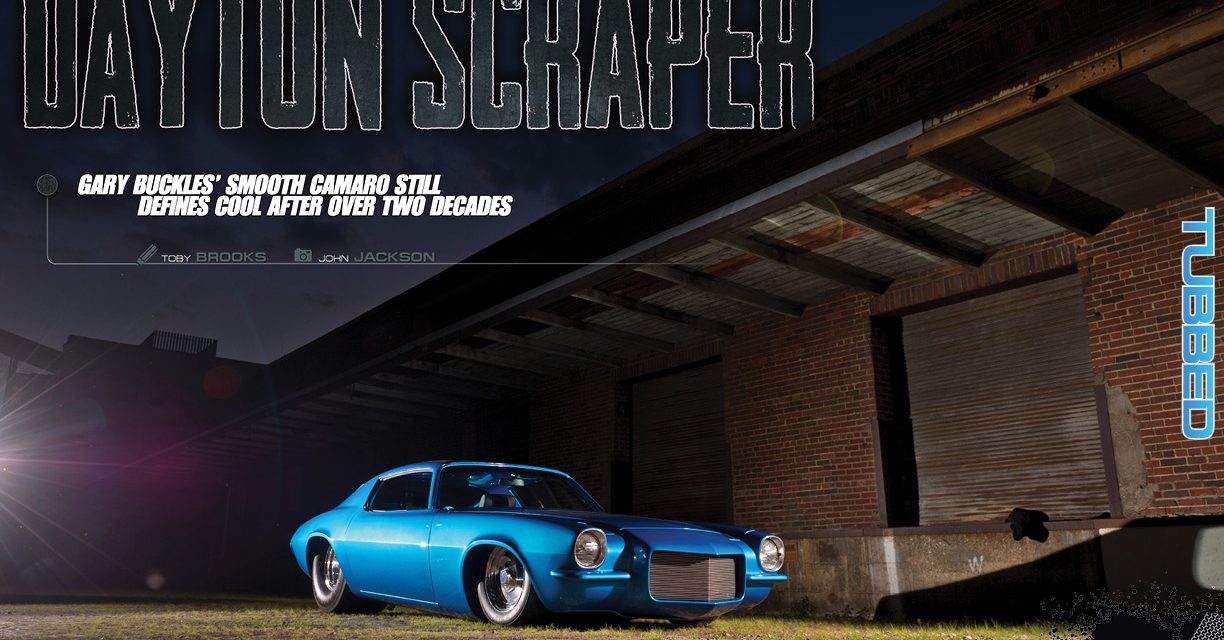

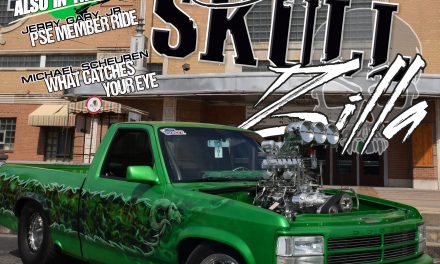
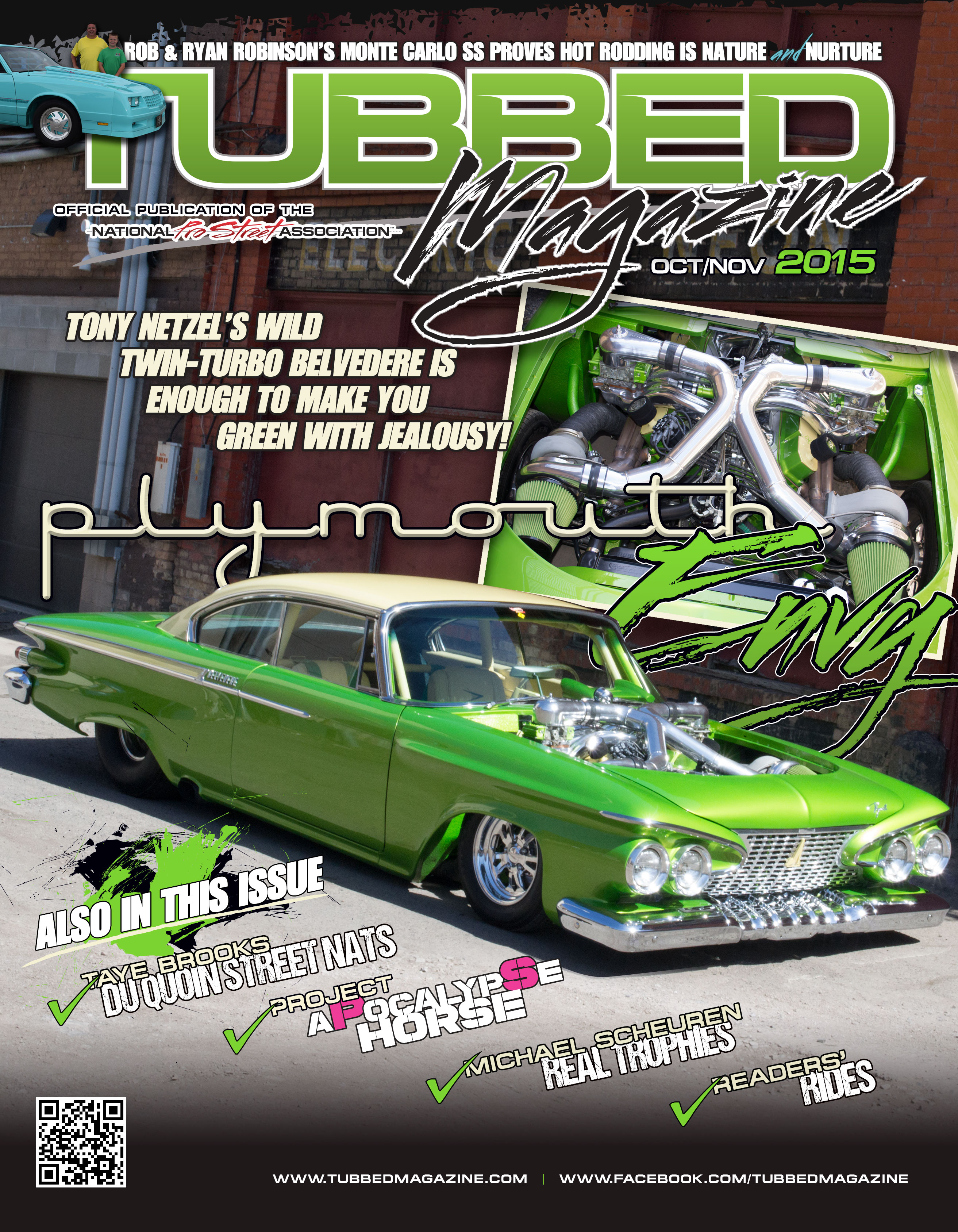

How can I get a subscription?
I own a Pro Street 69 Chevelle. It is driven 2-4 times each week around town. 555 Dart, wheelie bar, slicks and all.
Roy